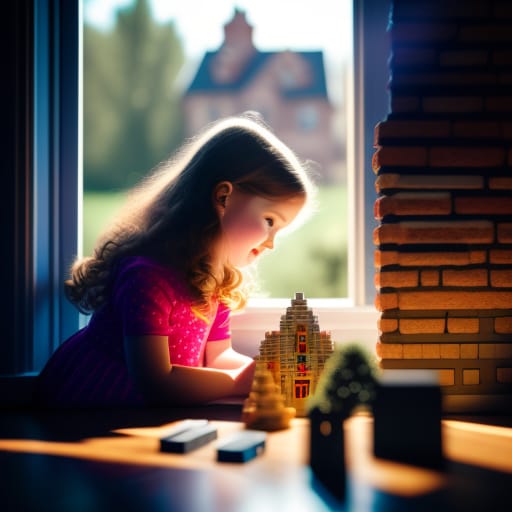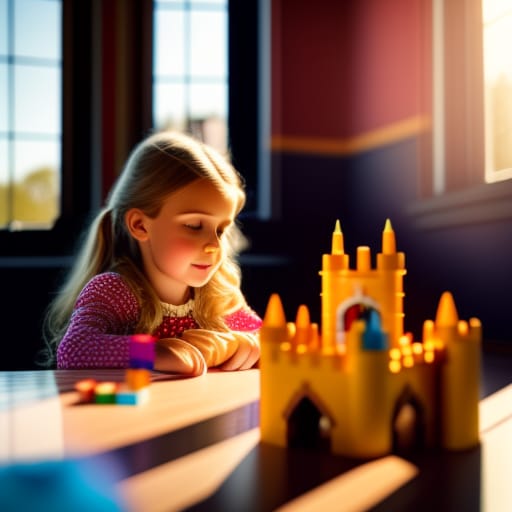Large building blocks have become an extremely popular toy for children of all ages. These oversized plastic bricks connect together easily, allowing kids to build elaborate structures and let their imaginations run wild. For parents and gift-givers who are new to the world of large building blocks, this beginner’s guide will provide a comprehensive overview of what you need to know.

What Are Large Building Blocks?
Large building blocks are oversized interlocking plastic bricks that can be assembled and connected in a variety of ways. They are modeled after traditional wooden blocks but are much bigger in size. The most well-known brand of large building blocks is LEGO, which originated in Denmark in the 1930s.
Some key features of large building blocks:
- They come in a range of sizes, from small 1×1 bricks to larger bricks and plates.
- They interlock thanks to protrusions on the top and tubes on the bottom.
- They can be assembled and taken apart over and over.
- A variety of themes and kits are available.
- Almost anything imaginable can be built!
Benefits of Large Building Blocks
There are many excellent reasons for kids to play with large building blocks:
- Develops motor skills – Assembling the blocks enhances fine motor skills and hand-eye coordination.
- Sparks creativity – With no instructions, kids are free to build anything they can imagine.
- Teaches spatial skills – Visualizing and assembling 3D structures fosters spatial intelligence.
- Encourages problem-solving – Kids learn to think through how to build sturdy, balanced structures.
- Promotes persistence – Trying again after structures fall helps kids develop grit and perseverance.
- Fun, open-ended play – Building sessions are child-led and support independent play.
So not only are large building blocks fun, but they also provide key educational benefits for children.
Types of Large Building Blocks
There are a few main types of large building blocks to be aware of:
Classic/Basic
These standard rectangular blocks in a range of sizes and colors are the most versatile. Stacked in various configurations, they can be used to build almost anything.
Themed
Sets that focus on particular themes like castles, animals, transportation, etc. They include decorated blocks and supplementary pieces like doors, windows, and mini figures.
Duplo
These are LEGO’s larger blocks designed for smaller hands. They have chunkier studs and tubes for easier grasping by toddlers. Duplo bricks interconnect with classic LEGO.
Mega Blocks
Mega Blocks are a budget-friendly alternative to LEGO. They have similar dimensions but tend to have less variety in shape. Mega Blocks work with LEGO bricks.
LEGO vs. Generic Brands
LEGO is the premier brand when it comes to quality and variety of large building blocks. Here’s how LEGO compares to generic store brands:
- LEGO bricks have tighter manufacturing tolerances for a better fit.
- LEGO elements come in more shapes, sizes, and colors.
- LEGO sets include more specialty pieces like doors, wheels, and mini-figures.
- LEGO blocks come with stronger branding and licensed themes.
- Generic blocks are less consistent and tend to break more easily.
- Generic sets have fewer pieces and options.
- However, generic brands cost significantly less.
For young builders, opt for LEGO if you can. But inexpensive generic bricks can be a budget way to start out.

Choosing Large Building Block Sets
When selecting large building block sets, here are some factors to consider depending on the child’s age and interests:
For toddlers
- Duplo sets with chunky bricks
- Basic brick boxes for free building
- Simple vehicles (cars, planes, etc)
- Simple houses or animals
- Max 30-40 pieces
For preschoolers
- Sets based on kid’s hobbies and themes
- Licensed sets featuring popular characters
- Bricks and plates for basic structures
- Bright colors that appeal to kids
- Around 100-200 pieces
For grade school
- Advanced sets with gears, axles, motors
- Themed kits with intricate designs
- Licensed kits tied into movies, games, etc
- Collections to accumulate lots of bricks
- Consider their favorite building style
For teens
- Challenging Technic sets with complex builds
- Interest-specific kits focused on robots, architecture, etc
- Collectible series for superfans
- Let them pick based on preferences
Top Brands and Manufacturers
The top brands for quality and selection when it comes to large building blocks include:
LEGO – The classic brand, made in Denmark. Known for quality parts and iconic sets.
Mega Bloks – A budget-friendly alternative with decent bricks. Made by Mattel.
Kre-O – Hasbro’s take combines Transformers and other licenses.
Cobi – A Polish company with military and historical themes.
K’Nex – Emphasizes rods and connectors for movable models.
Playmobil – Combines building blocks with themed figurines.
There are also various generic brands available at major retailers. Quality varies, so inspect parts carefully before purchase.
Large Building Block Accessories
To enhance your child’s building block experience, consider these useful accessories:
- Storage containers – Plastic bins, zip bags, or divider trays help organize all the bricks.
- Baseplates – These flat pieces provide a steady base for building.
- Building mat – A plastic gridded mat or solid surface helps contain the bricks.
- Builder’s handbook – Idea books provide tips for what to build next.
- Mini figures – Small Lego-style figures can star in any creation.
- Extra bricks – Having plenty of basic bricks encourages creativity.
- Specialty pieces – Doors, windows, wheels, and more help build detailed models.
With the right accessories, kids can make the most out of their building block playtime.
Tips and Tricks for Building Success
Follow these tips and tricks for the best experience with large building blocks:
- Start on a flat, solid surface with boundaries. A plastic mat or tabletop works great.
- Separate and organize the bricks by color, shape, or size to ease building.
- Build models from the bottom up for stability. Use larger bricks for the base.
- Follow the pictures on the box for sets, but don’t be afraid to innovate.
- For free building, start with a basic shape like a box or house as a base.
- Use patterns and symmetry to create fun designs.
- Steady the model with one hand while attaching bricks with the other.
- Let go of creations gently to see if they stand on their own.
- Display finished builds proudly before taking them apart to build again.

FAQs
Here are answers to some frequently asked questions about large building blocks:
What’s the difference between Duplo and regular LEGO?
Duplo bricks are twice the size of classic LEGO with bigger knobs and tubes for easier grasping by small hands. But Duplo bricks still interlock with traditional LEGO.
What age are large building blocks appropriate for?
Duplo sets can be enjoyed by toddlers aged 1.5-3 years. LEGO Juniors around 4-7 yrs. Classic LEGO is best for 5 years old and beyond.
Are generic bricks compatible with brands like LEGO?
Yes, most generic brick brands are made to the same dimensions as LEGO and will interconnect. But quality varies.
How many large building blocks should I start out with?
Aim for around 60-100 bricks of varying sizes and colors to start. Buy more bricks as your child masters building.
What do I do if blocks are missing or broken?
Contact the manufacturer about replacement bricks if under warranty. Otherwise, you can order individual bricks directly from LEGO.
Final Thoughts
With their countless possibilities, large building blocks offer endless fun while also being educational. As you venture into the world of oversized plastic bricks, keep this guide in mind when choosing toys and accessories to delight and inspire the building block lover in your life. Let their creativity run free as they learn and grow through hands-on block play!
Additional Resources:
The LEGO Group’s Official Website